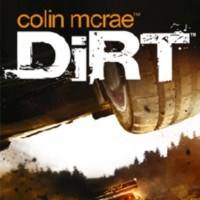Colin McRae DIRT: Vehicle's technical condition
During the race your vehicle comes under smaller or bigger damages: every corner's cutting off through the hard (uneven) shoulder, every impact affects the vehicle's technical condition. Sizable damages are communicated with red icons appearing on the screen during the ride - they symbolize which car's components are in bad shape. Additionally you can pause the game to get more detailed info (in %).
 | Every two races (in Rally competitions) you have a possibility to repair your rally vehicle. You have 60 minutes for this. In case of damaging all possible components it's too little. Impossibility of repairing all of them leads to the necessity of riding not fully efficient vehicle in next race and can affect that race's result. Damaged parts are de facto replaced with new ones, so before you decide to replace concrete component better check how big the damage is and whether or not you have urgent repairs. And you will be dealing with flows that affects following car components: |
Clean vehicle - as a matter of fact this is not a flow (. Cleaning the vehicle will reduce the time it takes to repair components on the vehicle. It allows your mechanics to work in clean conditions, so, for example, a clean wheel nut can be removed far quicker than one covered in mud. A clean vehicle also gives marginally better aerodynamics, allowing for quicker acceleration. Generally, it is worth to clean the vehicle before you start any serious repairs, because time profit may be significant. For example, cleaning the vehicle will take 8 minutes, but the time you will have to spend on repairing of other components will be reduced by a quarter - so you'll gain additional 7 minutes. However, try to obtain more minutes than you must spend on cleaning the car and don't treat vehicle's cleaning as a priority: if there left only these 8 minutes and you can do other serious repair in that time - just do it.
Engine - keeping the engine in good shape is vital as it greatly affects performance. Losing power will mean slower acceleration and an increase chance of the engine stalling after rolls and high impacts. Damage can be terminal if the engine becomes severely damaged and the head gasket blows.
Gear box - if it is damaged then gear changes will be slower than normal. Heavy damage will result in gears becoming unselectable while racing. Do not overuse braking by gears reduction while using manual transmission because it may lead to "slaughtering" of a gear box!
Driveshaft - is situated on the underside of the car, which makes it susceptible to damage. If the driveshaft becomes damaged the vehicle will lose power distribution to the wheels, especially those furthest from the engine.
Exhaust - its damage will result in airflow problems and cause a power reduction of up to 50% where it is squashed or blocked. In consequence of this your car will lose acceleration and its top speed will also be affected, I mean reduced in this case. Sound pollution restrictions also mean that stewards will not allow you to continue racing where there is severe damage or complete loss of the exhaust, however, I didn't deal with such a situation in this game (not even once).
Bodywork - damaged bodywork will result in increased drag, making the vehicle accelerate slower (top speed is also reduced). Also if a front or rear spoiler is lost or damaged the vehicle will have reduced downforce which will make the vehicle less stable at high speeds. Finally if the exhaust needs replacing, then the bodywork must be repaired first, as you cannot fix on a new exhaust if the bodywork is damaged.
Cooling system - it contains the radiator, which is critical to the vehicle's performance. If a radiator becomes damaged not only is the result spectacular, but with no cooling the engine will also start to overheat quickly. An overheated engine can result in an early end to your race.
Suspension - can be knocked out of alignment and damaged from harsh landings and heavy impacts. If damage occurs vibrations will be inevitable and the vehicle will become more unstable while cornering. Damages can also reduce road-grip of the car and make its steering more difficult.
Wheels - if damaged, steering will become more difficult and unpredictable (damaged wheels often blow the car off course), acceleration will also be reduced in consequence of increased rotational resistance. If a wheel comes off completely you may be unable to continue the race.
Turbo - a critical component but not every car has it. If damaged you will have an instant drop in acceleration and performance.
If you look closer to the damage screen you will surely notice red numbers on its left side. They show the maximum speed of the vehicle and its acceleration from 0 (zero) to 100 and 150 km/h. These values change (increase) while you are replacing some components of your rally vehicle. In other words: your car's performance improves when you're replacing some of its parts. Thus these parts/components (the engine, driveshaft, wheels and turbo) are crucial and most important and you should fix (replace) them in the first instance. All other parts have a secondary importance de facto.
You are not permitted to copy any image, text or info from this page. This site is not associated with and/or endorsed by the developers and the publishers. All logos and images are copyrighted by their respective owners.
Copyright © 2000 - 2025 Webedia Polska SA for gamepressure.com, unofficial game guides, walkthroughs, secrets, game tips, maps & strategies for top games.
